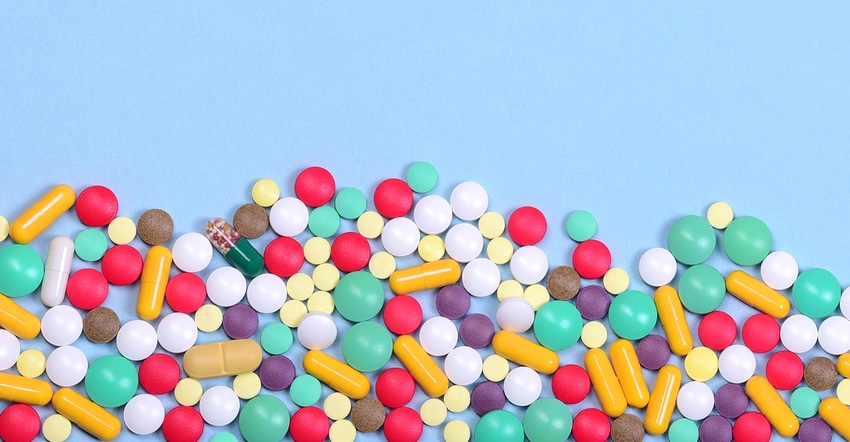Novel delivery formats are evolving for supplement makers, offering full sensory potential but also challenges with consistent ingredient amounts.

One of the crucial factors affecting the rise of food supplement popularity in the past years is bringing health benefits closer to users through the development of novel delivery forms. It is an exciting area of innovation filled with opportunities when viewed from the brand owners’ side, but also not short on challenges when observed through the eyes of manufacturers.
Trending forms
Emphasis on look, smell, taste—the entire user experience—has never been more present and demanded by our partners. Forms delivering full sensory potential are on the rise, first and foremost, liquids. From oil drops to syrups and shots, to more water-based suspensions, we see a clear rise in the occupancy of our liquids line and orders coming from very different markets, too.
Additionally, an evident industry trend is moving toward forms that allow direct usage, without prior preparation, possibly even on the go, while of course offering a pleasant sensory experience and, importantly, avoiding the swallowing of solid objects. This encompasses liquid stick packs, orodispersible (via disintegration in the mouth) powders in stick packs, orodispersible tablets, chewable softgels, gummies and sprays. The latter form is taking a more central role lately in our portfolio and is appreciated by our partners due to several reasons.
Because you never open the entire liquid container, it is better protected from contaminants and oxidation. You can carry it around anywhere for simple direct use without water and we even get feedback of younger users enjoying it as a fun format. Since they don’t have to swallow pills or larger amounts of liquids it can importantly improve compliance. There has been less focus on modified release, delayed release, and gastro-resistance lately from brand owners. Not that these are not important areas with large potential for innovation, but our observation is that friendliness of use is much higher on the list of priorities.
That said, there are two facts that should be considered when choosing the appropriate form for the next product. First, more traditional pill-like formats, such as capsules, tablets or softgels, still represent a substantial and important part of the market and should not be dismissed as inherently inferior. And second, form preferences are regionally specific. We see our partners with respected brands in Central or Eastern Europe and the CIS region often preferring traditional forms, as consumer perception is simply different in those markets and capsules are more easily associated with pharmaceuticals and clinically proven benefits.
Common challenges in development
While innovative delivery forms present a better experience for the user, they come with certain challenges that demand extensive development expertise from the manufacturer and understanding from the brand owner.
Liquid forms are the most potent medium for reactions of any kind, biological or chemical. Subsequently, product stability is a substantial challenge. By stability we mean not only microbiological stability, but also oxidation stability, stability of taste, smell, and perhaps most importantly, stability of ingredients within the finished product. To obtain all of these in a liquid delivery format is to deliver all the promised benefits to the consumer through a pleasant user experience, and each such instance is an achievement on its own.
It is often underestimated how quickly ingredients in complex liquid food supplements can interact, degrade and not be present anymore to provide the health benefit it should. PharmaLinea has spent many years developing an expertise in this area and highlighting the importance of stability.
With sachets and other forms containing powder, uniformity is a characteristic that is sometimes taken for granted. To ensure that each scoop of powder or each sachet contains the same amount of active ingredients as stated on the label is not easily achieved with certain substances and can involve efforts from both formulators and engineers.
Orodispersible powders are one of our more recent projects and an exciting area of innovation. Here the user experience is dependent on even more factors. First, dispersibility needs to be achieved for the powder to dissolve nicely and be swallowed easily. However, this should be done with as few additives as possible, for the sake of cleaner labels and the sheer volume of the powder a consumer is able to swallow at once. Further, the particles can’t be too big for dissolving, or too small, as they can create a dusty effect and cause coughing due to agitation in the throat. The product shouldn’t foam, it shouldn’t be sticky or in lumps, and the taste is highlighted more because nothing but the concentrated powder is ingested by the consumer. A particularly fine balance has to be found for the consumer to want to use the product over and over.
Sprays also face an inherent challenge of uniformity of dosage. Does the spray pump itself deliver consistent volumes of liquid? Does the liquid’s viscosity support the volume’s consistency, and does it produce the desired spraying effect, somewhere in between mist and steam? These are all interesting questions that require not only the product development team, but also the primary packaging development team to answer.
A challenge that spans across all delivery forms is the development of preservative-free and sugar-free versions of supplements. Due to the increasing popularity of the trends, companies like PharmaLinea have been investing much of our efforts into such projects. Substantial resources are required in order to achieve the desired “free-from” characteristics while maintaining great taste and product stability.
Useful information for the brand owner
Different forms present different development challenges. A lot of tedious work is involved where experience really fast tracks the process and where the outsourcing model makes a lot of sense; if brand owners were to develop products on their own, they would burn precious time to market and could be overrun by a competitor. Looking for expertise in new product forms is one of the more common reasons why we first contact many of our partners. It is also a situation where we sometimes run into different expectations from NPDs or other positions on the brand owners’ side.
Timelines are a common point of miscommunication. Too often we see highly ambitious statements by contract manufacturers and private label providers, promising timelines for development in the range of weeks. Particularly for complex product forms, development from conception to delivery with all the proper supply checks and stability testing can take much longer.
With private label the time to market is shorter because we have a portfolio of ready products with all the connected studies completed. However, sometimes partners have specific requests for adjustment of certain dosages, and they often do not keep in mind that such changes can require a whole new development process. To start, we cannot simply extrapolate stability data to different formulations, especially for non-standard delivery forms. Because the entire industry is going in the direction of pharma standards, so too is research and development; the understanding of development should also follow.
One very connected notion is that the outcomes of development can also be negative. Our partners that come from the pharmaceutical industry are aware of this and are prepared for such results. The percentage of started versus successfully completed development projects is quite low in pharma, because regulatory requirements are much more stringent. In food supplements the idea is more foreign and not accepted as well. However, we believe we have an obligation to consumers to uphold certain standards of quality.
We as manufacturers also have an obligation of transparency toward the client. Therefore, we feel it is sometimes rather a good sign and a good indicator for picking a manufacturer if they can say the simple word “no.”
Denis Dalapa is technical director at PharmaLinea Ltd.
About the Author(s)
You May Also Like






.png?width=800&auto=webp&quality=80&disable=upscale)